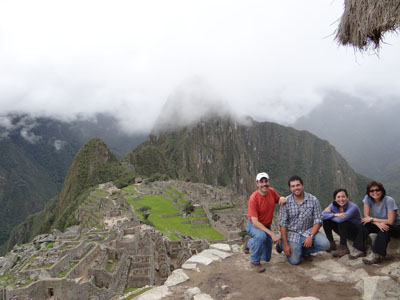
The Few…The Proud…The ROS1-ers!
When I was first diagnosed with stage 4 adenocarcinoma of the lung in December, 2012, my oncologist told us that my tumor would be tested for mutations in two genes, EGFR and ALK. If I had a mutation in either gene, I would be able to try an oral, targeted chemotherapy. Based on my demographics, (Asian female, non-smoker, etc.), I had a 50-80% chance of having one of the two gene mutations. As it turned out, I was negative for both. I was unspeakably disappointed, and started on a traditional IV chemotherapy.
My oncologist encouraged me to have additional mutation testing done…pan-cancer mutation analysis. Previous testing had used up all of my initial biopsy tissue, so in order to have the recommended additional testing I needed to have another tumor biopsy. The traditional chemotherapy I was getting included Avastin, which is associated with an increased risk of serious bleeding. So I had to wait 28 days (a month!) from my last Avastin infusion before I could safely get a second biopsy.
 I was not optimistic that additional testing would find a treatable mutation for me. ROS1 is rare…so rare that I barely registered it as a possibility. I was told that there was a 1% chance that I’d be positive for it. I worried that my insurance wouldn’t pay for additional testing and that after paying for this test, out-of-pocket, I would fall into the 99% of patients who do not have a ROS1 mutation.
I was not optimistic that additional testing would find a treatable mutation for me. ROS1 is rare…so rare that I barely registered it as a possibility. I was told that there was a 1% chance that I’d be positive for it. I worried that my insurance wouldn’t pay for additional testing and that after paying for this test, out-of-pocket, I would fall into the 99% of patients who do not have a ROS1 mutation.
My husband talked me into getting the second biopsy and going for pan-cancer mutation analysis.
I am so grateful that my oncologist and my husband were persistent about talking me into getting pan-cancer mutation analysis because I am in the 1%! After a few days of wrangling with our insurance company to get crizotinib covered, I started on it in March of 2013. I am one of the fortunate souls with stable disease since starting on crizotinib over 3 years.
Being a small group is clearly a disadvantage. Although we are fortunate to have a medication like crizotinib, we need more options. We desperately need some attention from pharmaceutical researchers, and I hope this effort by the Lung Cancer Foundation will be the first step.
